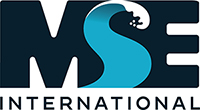New advances in ‘Micro Electro-Mechanical’ tech to boost maritime sector, according to Euro 1million EU study
Posted 2020-03-18 14:11:29 by Admin
 Partners working on the Euro 1Million KETmaritime project have released a detailed report on the potential of 'Micro Electro Mechanical Systems'(MEMS) for marine applications.
Partners working on the Euro 1Million KETmaritime project have released a detailed report on the potential of 'Micro Electro Mechanical Systems'(MEMS) for marine applications. New advances in MEMS are driving developments across marine navigation systems and autonomous exploration vehicles, as well as structural health and ocean weather monitoring systems and biological and marine pollutant studies.
Leading producers of electronics worldwide have spent many years developing MEMS, carrying out research, production and commercial activity, ensuring a high degree of maturity across many applications. The latest KETmaritime report highlights how the electronics sector, and MEMS in particular, will enter a turning point in the coming years driven by advances in current technology including silicon semiconductors and possible progression towards new semiconductors or alternatives with greater capacity.
Increased demand for smaller more intelligent electronic devices continues to drive advances on all levels. Global innovation in production processes has boosted capability of micro and nanoelectronic systems, while advances in engineering are providing the basis for chips not only containing electronic components, but also integrating mechanisms for sensing applications - resulting in a fusion between electronics and mechanics. This has combined to provide a host of new opportunities across the marine field.
The report was authored by Spanish industrial design centre IDONIAL in collaboration with Marine South East in the UK and the INL.
Within navigation, the development of MEMS sensors is key not only for the implementation of location and positioning technologies, but also for the development of complete mobile platforms for the collection and distribution of data in open water environments. In addition, weather monitoring and forecasting, traditional navigation and fisheries activities, as well as partially unassisted activities (associated renewable energy or aquaculture fields) require complete sets of sensors capable of monitoring environmental variables. MEMS help produce short and medium-term weather prediction systems driving productivity.
MEMS are also used for monitoring water properties and composition. This is highly valuable for maximizing aquaculture activity, identifying potential pathogenic agents and unwanted variations of acidity, etc.
MEMS technology can also be used to monitor marine structures. Any activity carried out continuously in marine environments is inherently subject to external aggression, capable of deteriorating all structures in the absence of adequate controls and maintenance. MEMS sensors are now capable of measuring variations of the stresses and strains which structures are subjected to, essential to informing maintaining plans and preventing accidents.
The KETmaritime project is funded by the Interreg Atlantic Area Program, via the European Regional Development Fund. The consortium also includes French multidisciplinary research laboratory CIMAP (CEA group) and Portuguese maritime economic cluster Fórum Oceano. Ireland's national centre for marine and renewable energy MaREI is delivering further support, alongside Spanish non-profit research association AIMEN.
To download the complete KETmaritime case study report on 'Micro Electromechanical Systems' marine applications click on the following link http://www.ketmaritime.eu/media/
For more information on the KETmaritime project visit the website http://www.ketmaritime.eu phone +351 253 140 112 or email Ana Vila on Ana.Vila@inl.int


